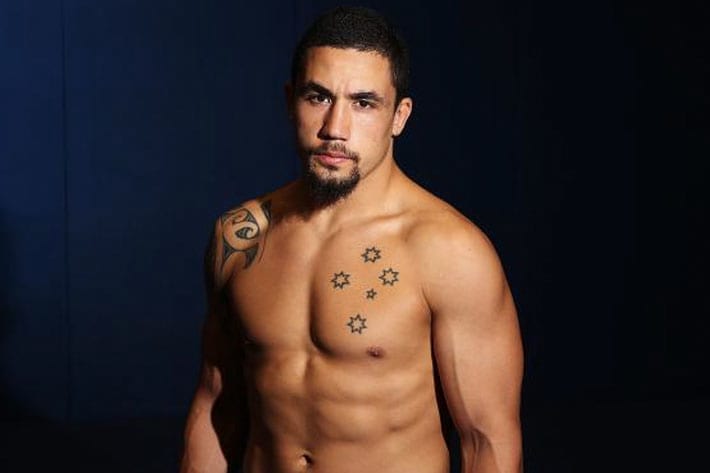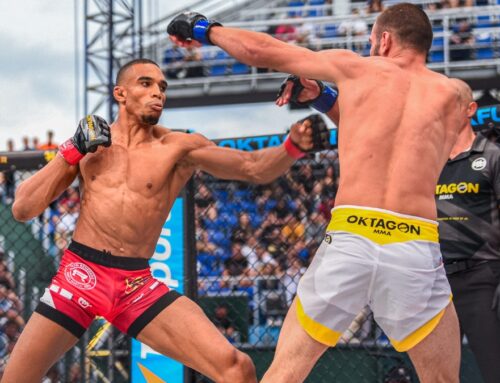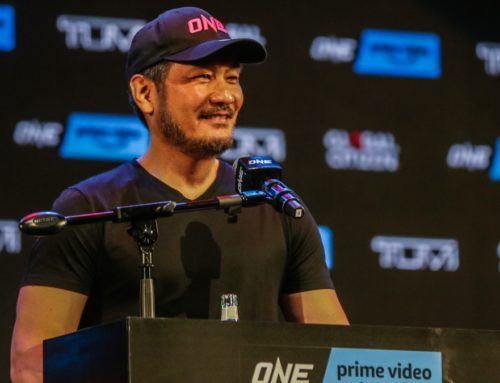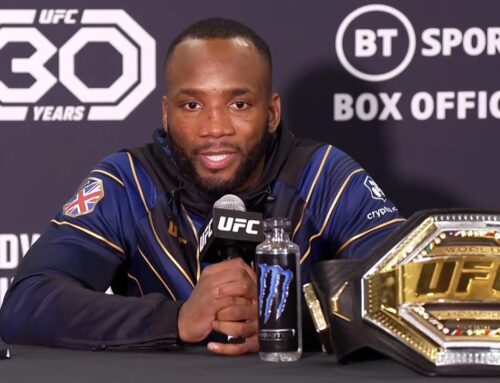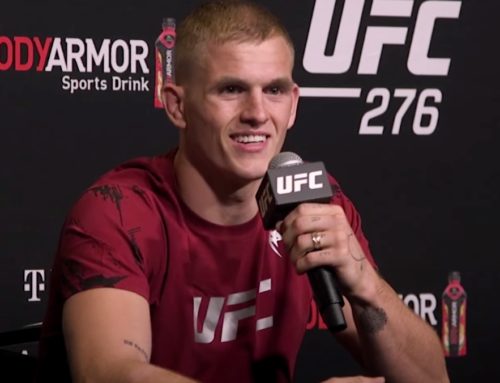Remember the night of November 8, 2014? Probably not. But that was the night the old Robert Whittaker died and a new one, a heavier one, was born.
The unfortunate Cliff Hester was present for the birth – or rebirth – as were 10,000 Australians at the Allphones Arena in Sydney. The welcome party consisted of knees and punches to the face and finally wrapped up at the 2:43 mark of round two. Party pooper Hester, meanwhile, was invited to a shin-dig down under, but receive a battered and bruised body and face for his troubles. Didn’t even go home with a goodie bag.
Robert Whittaker’s move from welterweight to middleweight was a seminal moment in the New Zealander’s eight-year mixed martial arts career. It changed him. It changed the perception of him. It changed everything.
Rather than an excuse to kiss goodbye to his diet or reduce his cardio training, Whittaker’s move up fifteen pounds was instead one born of necessity and, moreover, something he had been planning for a while.
“Growing up, I knew I would have to move up to middleweight at some point,” Whittaker told Fighters Only last year. “I started my fighting career when I was eighteen and the weight cut was so much easier. But then, when you have success in one weight class, it’s tough to walk away because you don’t want to stop a winning habit. I won an Australian title at welterweight, and The Ultimate Fighter: The Smashes tournament, too. Plus, I had people telling me that being big for the weight class was always an advantage.
“But it got to a point where it was really starting to effect my fight day. The cuts were getting outrageously large and I had to have those bad experiences with the sauna and the weight loss to force my hand to move up to the middleweight division.”
The great thing about Whittaker’s move was that it wasn’t necessarily one motivated by poor form and a lack of opportunity. Sure, back-to-back defeats to Court McGee and Stephen Thompson were far from ideal, yet Whittaker, 26, was plenty young enough and good enough to still make something happen in the 170-pound division had he decided to stick around. What’s more, his last fight at the weight, a June 2014 scrap with Mike Rhodes, ended in a unanimous decision victory.
“I sat down with my coaches and my father and we made that decision as a team,” he explained. “They knew as well as I did it was time. I suggested the move and I never really had any complaints from anybody. After all, I’m the one who was sitting in the sauna, dehydrated and deflated just a day or two before a fight, who then had to get motivated to compete.
“I was more worried about making weight than I was about competing. The thought process when you’re locked in a sauna at times like that is exhausting and I’d simply had enough of it.”
Off he went, then.
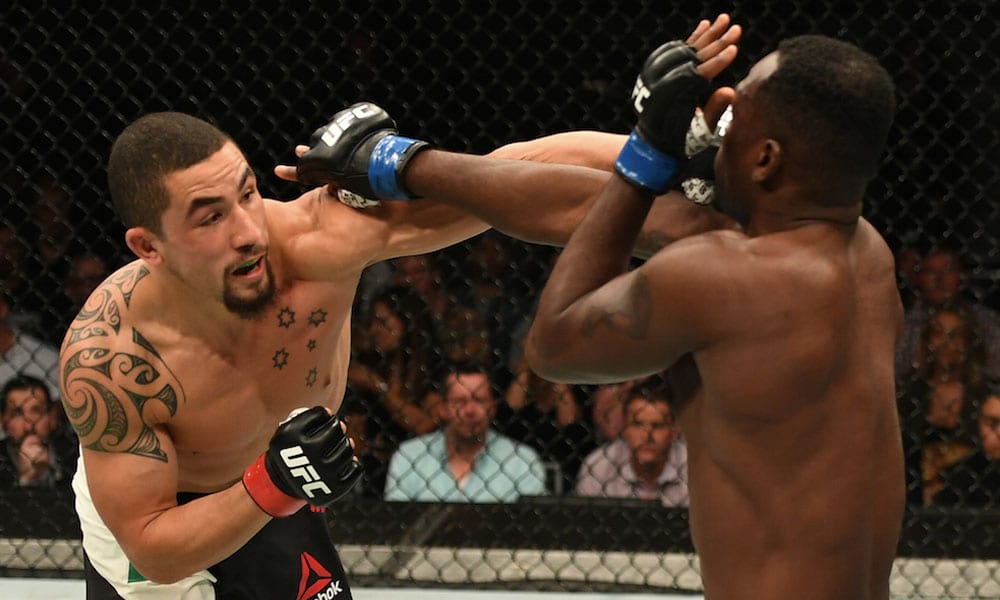
Rare is the fighter who voluntarily chooses to mix it with bigger and scarier men. Usually, if history is anything to go by, it works the other way; a fighter all out of opportunities will try their luck against naturally smaller foes in a weight division below the one in which they currently compete.
Whittaker, though, was different. He’d had enough of the weight struggle and held no fear of the prospect of exchanging punches, elbows, kicks and knees with men larger than the likes of Stephen Thompson and Court McGee. He backed himself. He placed faith in his ability to thrive at middleweight and was adamant the only reason he ever struggled at welterweight was because of the stress and pain of making the 170-pound limit.
“The move to middleweight finally allowed my body to grow into its natural state,” he said. “In some ways I was inhibiting my maturity by staying at 170-pounds, so, once I moved up, everything came into balance.
“That’s one of the major reasons behind my success at 185-pounds. I’m clearly a more natural middleweight. I’m certainly much stronger now and can absorb more punches, too. I’m finally in the right place for my body and that’s why I’m having so much fun. My confidence levels have risen dramatically because I now trust my body to perform at 100%”
Since the move to middleweight in 2014, Whittaker has, quite simply, been a revelation. There are seven straight wins to his name and a UFC interim middleweight title fight against Yoel Romero booked for this Saturday (July 8) at UFC 213. If that’s not a career turnaround, a second life, I don’t know what is. Furthermore, Whittaker’s hot-streak represents validation for a fighter who had the courage and foresight to make a change – take a risk – and see if he’d feel better and fare better when playing with the big boys.
By all accounts, he does. Take one look at the way Whittaker dismantled Ronaldo ‘Jacare’ Souza in April and you won’t doubt that for a second. Relaxed, composed and ever so smooth, Whittaker exposed gaping holes in Jacare’s striking game, hurt him on multiple occasions and eventually turned off the highly-regarded Brazilian grappler’s lights in round two.
It was a huge upset to everyone but Robert Whittaker, 18-4. To him, it was easy work.
“It’s all about the move up,” he said. “My previous fight camps were all about the weight cut, all about my calorie count and all about being ready for the weigh-ins. The fight had become an afterthought.
“Now I’m fully fuelled for every session of every day. I’m focusing a lot more on the technical side of things and I can feel myself improving day by day as my focus is purely on fighting – and fighting on a full stomach, too. It’s really night and day compared to what my training camps used to be like.”
They say a happy fighter is a dangerous fighter, and Robert Whittaker, the middleweight, with a belly full of grub and a grin on his face, has never been happier.

